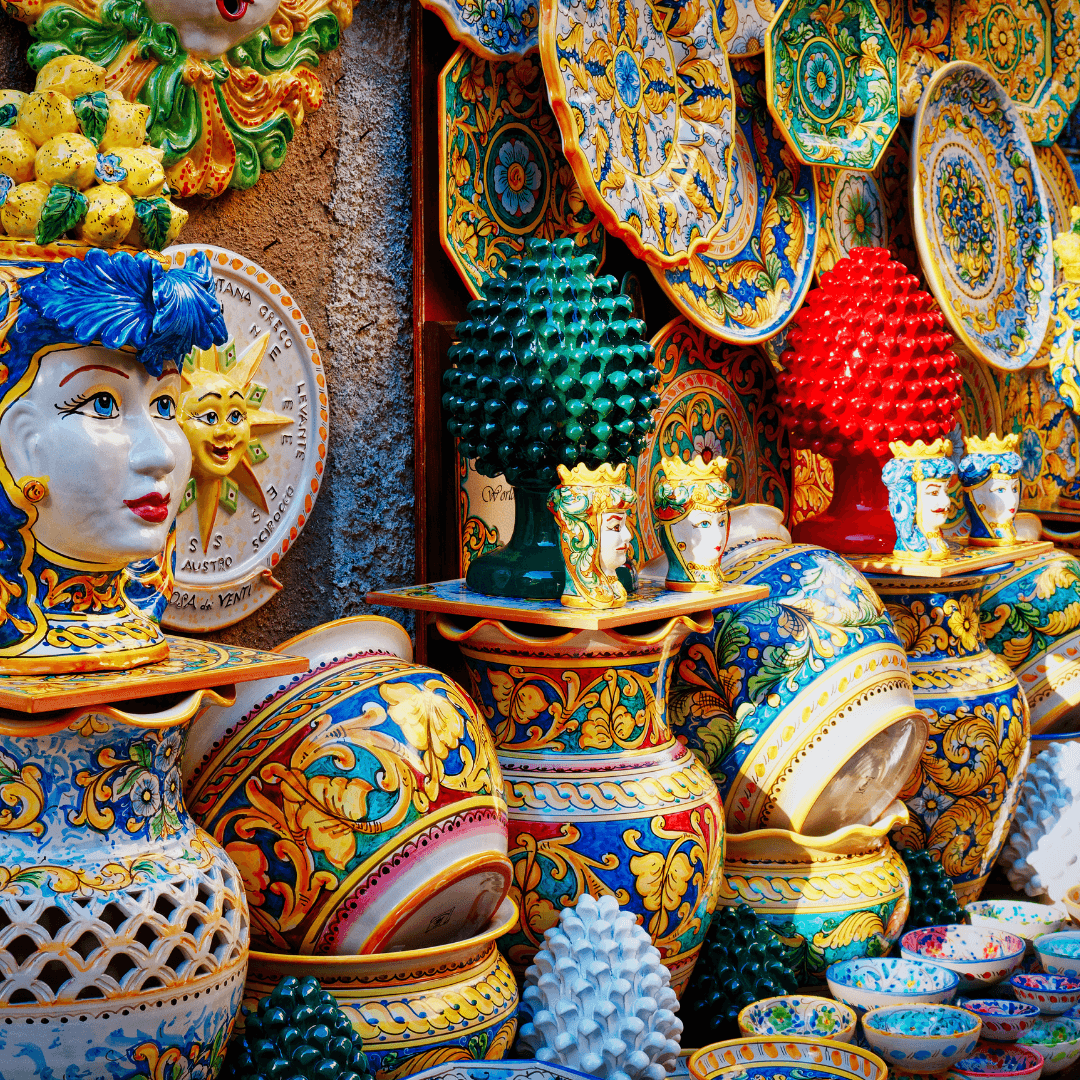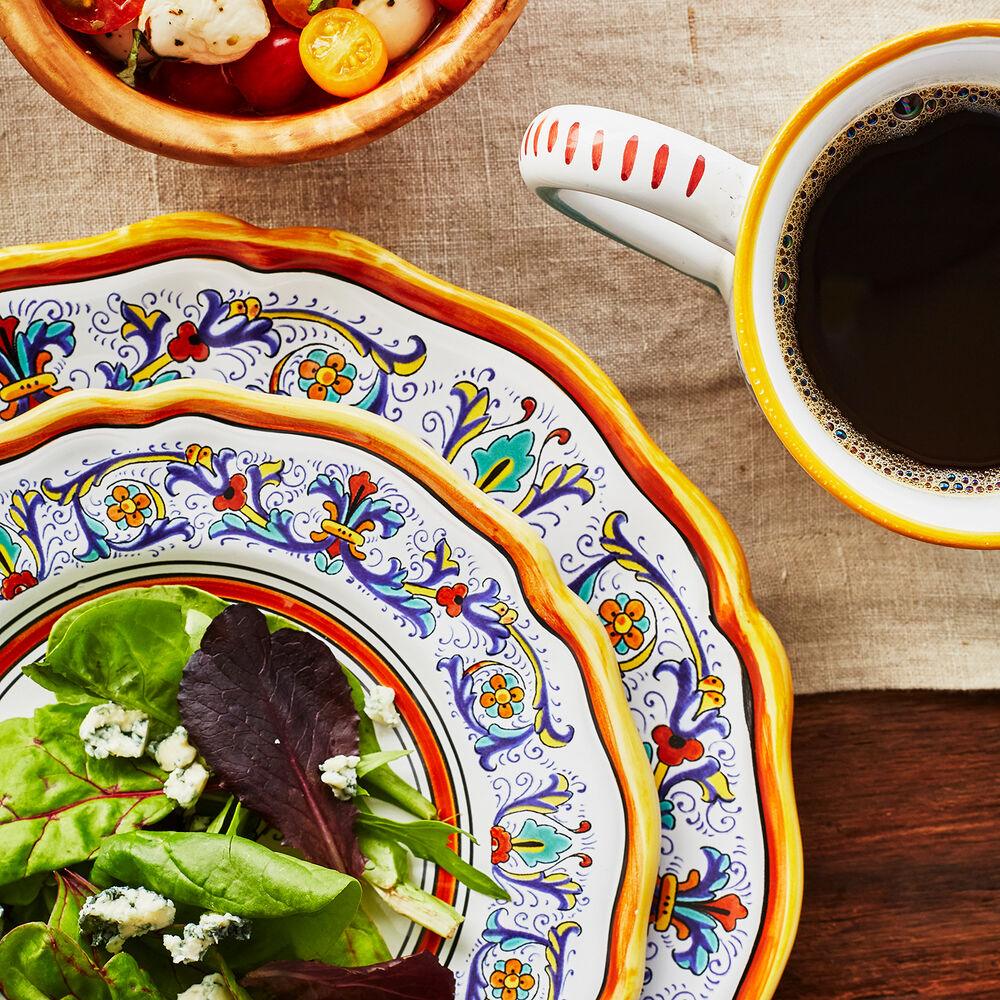Article: Italian Ceramics Tradition

Italian Ceramics Tradition
Man has been creating exquisite ceramic masterpieces with a handful of clay and a few flames for as long as time has been documented. Most of these painters — superbly accomplished artisans of their trade – were undoubtedly Italian.
Since humanity first landed on the lovely peninsula, Italy has been an unrivalled hub of art and culture, as we all know. The history of ceramics may be found in countless tiny communities strewn around the country's beaches, mountains, hills, and plains. Clay is transformed into vases or urns, plates or dinnerware, decorative pots, mirror frames, tiles, and a variety of other items in these hamlets.
The process of making ceramics begins in the Italian hills, where clay has accumulated through time and is extracted from deep inside the soil. The clay is then shaped into the desired shape, either on a potter's wheel or with a range of tools used to shape, smooth, cut, and finish the raw material to the artist's vision. Following that, the clay piece is heated. This was done over an open flame in antiquity, but today the artist utilises a kiln. The thing is permanently hardened as a result of this. What comes after this step of the procedure is what distinguishes ceramics from other types of pottery - the painting.
Modern Italian ceramics are noted for their one-of-a-kind, detailed, and exquisite hand painted designs, which are meticulously crafted by the few remaining ceramic artisans in Italian villages and cities. Ceramic paints are actually enamels and glazes that create a glassy finish when the object is re-fired in the kiln. As a result, the finished ceramic product has a shiny, polished appearance.
Caltagirone is one of the eight towns in southern Sicily known as the "Baroque towns of the Val di Noto," which were nearly fully destroyed and rebuilt after the 1693 earthquake. However, the town's pottery-making history predates that by two millennia. Glazing was added in the ninth century, and exquisite pottery have been manufactured in Caltagirone ever since! The ceramic tradition can be found throughout the town, not only in the various stores selling ceramics, but also in the city's architecture, with the most notable feature being the majestic Santa Maria del Monte staircase in the middle of town. The stairs are made up of 142 steps that are covered in colourful ceramics, with each step being unique.
The modest village of Deruta in Umbria's heart, regarded as "The Cradle of Italian Pottery Art," is at the heart of ceramic manufacture. Pieces manufactured in Deruta are found in prominent museums, outstanding private collections, and on expensive auction blocks around the world, and are widely appreciated for the preservation of historical ceramic traditions. Thousands of visitors travel to Deruta's factories and artisan workshops each year. If you have the chance to visit, stop by the town's Regional Ceramics Museum for a quick art history lesson.
The settlement of Vietri sul Mare is located on the Amalfi Coast, rather further south. It is located at the foot of San Liberatore Mountain and is a true clay treasure trove. Under the town is a treasure trove of historic relics, including a plethora of Corinthian and Roman pottery. Vietri, which also has an excellent pottery museum, is one of Italy's great ceramics centres. Faenza in Emilia Romagna, San Gimignano in Tuscany, Positano on the Amalfi Coast, and the entire region of Calabria all have stunning examples of this original Italian art style.
Faenza, located on the banks of the Lamone River, is built on fertile terrain rich in river clay deposits, which serve as the foundation for the city's ceramic art industry. Over 60 ceramic companies and workshops dot the town centre, each producing, selling, and exporting their own distinctive handmade ceramic objects.
Since humanity first landed on the lovely peninsula, Italy has been an unrivalled hub of art and culture, as we all know. The history of ceramics may be found in countless tiny communities strewn around the country's beaches, mountains, hills, and plains. Clay is transformed into vases or urns, plates or dinnerware, decorative pots, mirror frames, tiles, and a variety of other items in these hamlets.
The process of making ceramics begins in the Italian hills, where clay has accumulated through time and is extracted from deep inside the soil. The clay is then shaped into the desired shape, either on a potter's wheel or with a range of tools used to shape, smooth, cut, and finish the raw material to the artist's vision. Following that, the clay piece is heated. This was done over an open flame in antiquity, but today the artist utilises a kiln. The thing is permanently hardened as a result of this. What comes after this step of the procedure is what distinguishes ceramics from other types of pottery - the painting.
Modern Italian ceramics are noted for their one-of-a-kind, detailed, and exquisite hand painted designs, which are meticulously crafted by the few remaining ceramic artisans in Italian villages and cities. Ceramic paints are actually enamels and glazes that create a glassy finish when the object is re-fired in the kiln. As a result, the finished ceramic product has a shiny, polished appearance.
Caltagirone is one of the eight towns in southern Sicily known as the "Baroque towns of the Val di Noto," which were nearly fully destroyed and rebuilt after the 1693 earthquake. However, the town's pottery-making history predates that by two millennia. Glazing was added in the ninth century, and exquisite pottery have been manufactured in Caltagirone ever since! The ceramic tradition can be found throughout the town, not only in the various stores selling ceramics, but also in the city's architecture, with the most notable feature being the majestic Santa Maria del Monte staircase in the middle of town. The stairs are made up of 142 steps that are covered in colourful ceramics, with each step being unique.
The modest village of Deruta in Umbria's heart, regarded as "The Cradle of Italian Pottery Art," is at the heart of ceramic manufacture. Pieces manufactured in Deruta are found in prominent museums, outstanding private collections, and on expensive auction blocks around the world, and are widely appreciated for the preservation of historical ceramic traditions. Thousands of visitors travel to Deruta's factories and artisan workshops each year. If you have the chance to visit, stop by the town's Regional Ceramics Museum for a quick art history lesson.
The settlement of Vietri sul Mare is located on the Amalfi Coast, rather further south. It is located at the foot of San Liberatore Mountain and is a true clay treasure trove. Under the town is a treasure trove of historic relics, including a plethora of Corinthian and Roman pottery. Vietri, which also has an excellent pottery museum, is one of Italy's great ceramics centres. Faenza in Emilia Romagna, San Gimignano in Tuscany, Positano on the Amalfi Coast, and the entire region of Calabria all have stunning examples of this original Italian art style.
Faenza, located on the banks of the Lamone River, is built on fertile terrain rich in river clay deposits, which serve as the foundation for the city's ceramic art industry. Over 60 ceramic companies and workshops dot the town centre, each producing, selling, and exporting their own distinctive handmade ceramic objects.
